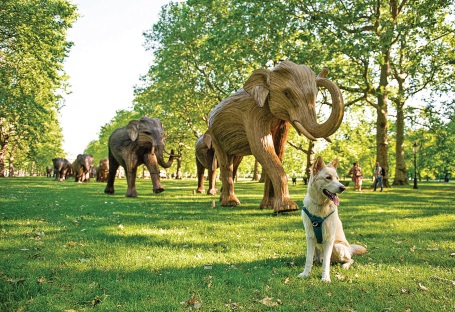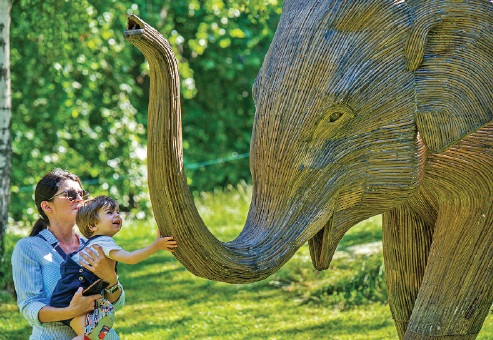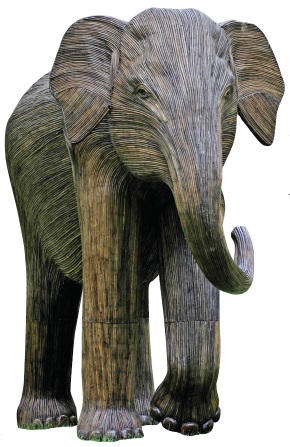Massive art project highlights coexistence

Exhibition trumpets the idea of humans and planet's wild creatures coexisting

The migrating herd of Asian elephants in Southwest China that has made headlines around the world as it has made its way through urban areas highlights the importance of effective human-wildlife coexistence strategies, said United Kingdom conservation charity Elephant Family.
The animals have trekked more than 500 kilometers since leaving their natural habitat last year.
Elephant Family said the Asian elephants' current proximity to people carries dangers for both the herd and humans.

"The increasing fragmentation of their forest homes means fewer safe links between feeding grounds, forcing them into human-dominated landscapes," the conservation group noted.
The charity said it wants to see more strategies in place that allow elephants to migrate, eat, and "do their best to fit into strange and human-dominated landscapes" in a way that is safe for both humans and wildlife.
It is still unclear why the herd started its journey, and the charity said more studies by wildlife experts will be needed to understand what triggered its move.

Tarsh Tekaekara, founder of The Real Elephant Collective, an India-based non-profit organization committed to protecting elephants, said: "Our best guess is that elephants are very intelligent and have learned that humans grow lots of nutritious food. Elephants move over long distances and explore their environment, as their ancestors have always done. Coexistence is about negotiating this sharing of space."
While Chinese authorities and wildlife experts continue to monitor the wandering elephants, the Elephant Family is highlighting the coexistence of humans and animals.
To do this, the charity has displayed 125 life-sized elephant sculptures in London as part of a campaign called CoExistence, of which The Real Elephant Collective is a partner.

A spokesperson for Elephant Family said: "CoExistence is an environmental art exhibition by Elephant Family and The Real Elephant Collective. The elephants have been created deep in the jungles of Tamil Nadu by indigenous communities who live in close proximity to their real-life counterparts. Here, people and elephants coexist in denser populations than anywhere else in the world."
The elephant sculptures arrived outside Buckingham Palace in May and have since moved to nearby Green Park, St James's Park, and Berkeley Square.
When many parts of the world went into lockdown to help control the spread of the novel coronavirus, researchers found wildlife thrived in the wake of this reduced human activity.
"Brought about by tragic circumstances, this 'great pause'… is helping guide us on how to best share space with animals on our crowded planet," the conservation group said.
Elephant Family said the CoExistence campaign "marks a unique moment in time, when a global reduction in human activity has had a positive effect on wildlife around the world".
"It has now been scientifically demonstrated that the moment we lighten our footprint, wildlife flourishes and in doing so, transforms the health of the planet for all. The pandemic has showed us that coexistence with wildlife in human-dominated landscapes is very much possible."
After the exhibition, the sculptures will go on sale for between 6,000 pounds ($8,346) for a calf and 30,000 pounds for a large adult. Money raised will be directed toward grassroots organizations in India working on peaceful coexistence.
- China's CR450: A new era of high-speed rail at 400 km/h
- TAN SUO SAN HAO to pioneer future of deep-sea exploration
- Xi's discourses on Chinese modernization published in Japanese
- Officials summoned over alleged garbage bin food served to students
- Caring hearts help to enhance quality special education
- Xi sends condolences to South Korean acting president over plane crash




































